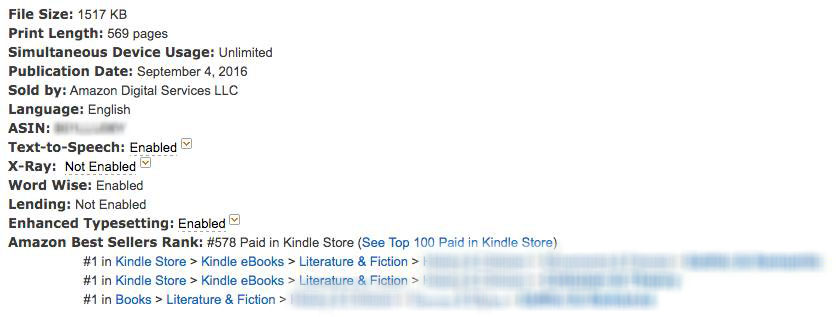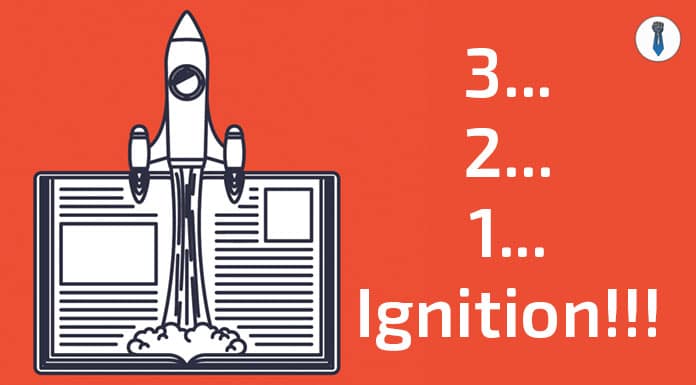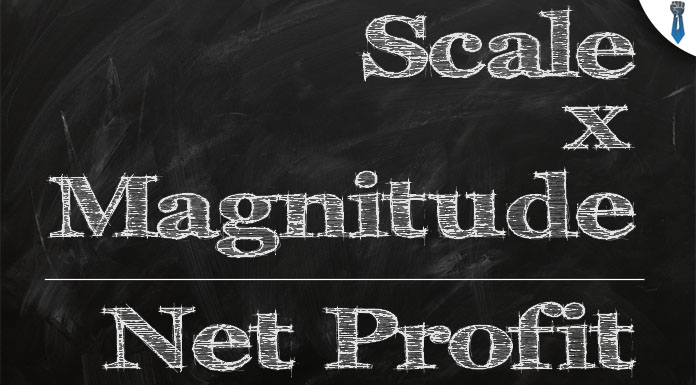Do you know what Amazon and space rockets have in common?
Rumors have it that in a couple of months Amazon will also sell space rockets!!!
What?
Joking of course. (They might need more than a few months) :p
Seriously this time.
What Amazon and space rockets have in common it that they both like, big spectacular launches.
And like a space rocket will consume most of its fuel to leave earth’s atmosphere the same should be the case when someone launches a new book on Amazon.
During the last couple of years, I have acquired much experience when it comes to Amazon eBook promotion. I have learned that although a book can have a long shelf life, the short period of the launch can be critical to the book’s success.
I have seen many books of mine (with equally good content) have tremendous ups and downs on sales after this initial launch while I was following the exact same marketing processes in both cases.
At some point, I have started to follow some patterns and managed to narrow down the cause to a single factor.
It all had to do with the book launch.
The more traffic and buzz I could send to my book, the better its initial rank and the longer the book would sustain its good ranking with less effort (money spent).
From then on, in every new book I published. I tried to make the biggest possible book launch.
Book launch and sales
But what does a massive book launch has to do with the sales of the book over time?
You see, Amazon has an algorithm in place that detects how much inbound traffic (that means traffic towards Amazon) each product (including books) gets.
The more inbound traffic a book gets, the more “visible” it becomes in the Kindle store and consequently the more sales you make.
A big book launch creates a snowball effect which essentially means:
Traffic > Exposure > Sales > More Exposure > More Sales
That is why the more buzz you’re gonna make in the beginning, the more exposure and sales the book is gonna make.
Now that you have this fundamental concept in mind let’s see how we can prepare for our big book launch.
A big book launch
There are certain channels we can utilize to send burst traffic to out book that will guarantee maximum exposure. But don’t forget, to achieve this exposure, we need to synchronize them precisely to blast the exact same day we have our launch.
So let’s see those one by one.
Channel #1: Facebook
If you have followed my website, you should know by now that Facebook is a tremendous way of driving traffic to your Amazon book. By regulating your spending, you can open or close the traffic valve according to your needs.
After I have set up my Facebook ad, a day before my book launch and two days after the launch, I open the traffic valve as much as I can afford.
For example, if I typically spend $10 per day on an ad, for the launch period I will spend $50 per day to achieve maximum exposure on Facebook.
Channel #2: Book marketing services
Whether this is a promo on their website or an email blast on their list, book marketing services work. But be careful. Not all promotion services are made equal. During the last couple of years, I’ve tried quite a few of them with mixed results.
Some of them had a good ROI, while others were a complete waste of my money. Unfortunately, there’s no easy method of finding only the best of them. It took me a lot of trial and error before I narrow it down to a few.
This Fiverr gig, for example, is one of the best I’ve found for a $0.99 promotion.
Channel #3: My mailing list
The second channel I am using is my own mailing list. There is a good reason for building one, and this is it.
You will get the most return on your investment on the launch day. The more subscribers you have and the more nurtured they are, the better the conversion rates will be.
For some publishers, this might be their biggest weapon in their arsenal. With every new launch, I send hundreds of visitors to my books from my list alone.
Channel #4: Other people’s lists
Last but not least, if you want to achieve even higher exposure, you should leverage other people’s lists.
This in effect will magnify the exposure your book will get, times X. The more cross-promotions you make, the better will be the results.
Be proactive and coordinate your efforts with other publishers/authors as well. Don’t be discouraged if your lists have different sizes. Unless one list is many times larger or smaller, you can always work out a cross-promotion.
For example in my last book launch, I leveraged four other lists for a total of almost 1200 clicks in one day.
Some people had a larger list than mine, so I had to promote their books more than once, and some of them had shorter lists, so they had to promote more than once for me.
*Important note: Fortunately there is a smart way to measure the exact clicks and the total cost of each cross-promotion you schedule.
All you have to do is to use bitly to create unique links for each publisher you are going to cross-promote. In this way, you will be able to track and measure how much traffic you got from each one.
Follow this article to learn how to create different tracking links for the same URL. Now that you know the exact number of clicks per promoter you can calculate the exact “cost” of this campaign.
Here’s how:
Supposedly you already run a Facebook advertisement, and you can already know the exact cost per click for this campaign.
For example from the campaign below, you can see that the average cost per click is about $0.25.

In essence, that means that I spend about $25 per 100 clicks to my Amazon book.
Now let’s suppose that promoter’s X mailblast sent 200 clicks to my book. That means that I could have bought his mailblast for $50 with Facebook ads.
This is critical because sometimes, promoters ask for absurd amounts of money for a promotion. I’ve heard many times even to ask for $50 for a single mailblast.
Sure, I would be more than happy to pay for it, if their blast would send me 200 visits or more.
See how this works?
Here’s a screenshot of the links I tracked in my last book launch.

In total, these mailblasts sent to my book 1125 clicks. Now, if I multiply 1125 x $0.25 = $281.25. That is the total amount I saved in Facebook ads by setting up a cross-promotion.
Putting everything together
Let’s see how my last book launch went. Step by step.
Step #1: I had a new book coming out on the September 4th. So I had already sent it to my ARC team to collect some reviews.
Step #2: After the reviews had gone live, I set up my Facebook ad and set my spending budget to $50 per day from Sept. 9th to Sept. 11th
Step #3: I have also set up a mailblast on my mailing list for the September 10th.
Step #4: I have scheduled a paid promo for Sept. 10th, using the Fiverr gig mentioned above.
Step #5: I have arranged all my fellow publishers to promote my book on the Sept. 10th.
Key metrics
Let’s have a look at a few key metrics of this book launch.
First of all the book got downloaded more than 200 times this day and it continued strong for many days after that.

It reached a paid ranking #578 in Kindle store and #1 ranking in all respective categories.

On September 10th, this book alone made a revenue of more than $100, and if it was more than the 625 KENPC which currently is, I’m sure it could easily pass the $300 mark.
The most important thing is that the book continues to sell very well even now. And the most important factor was the very successful book launch I had.
Having said that, I plan to schedule an even bigger launch for my next book. This book will have a bigger KENPC, and I will push it even further promotion wise.
Stay tuned for more results.
*As a final note, because you often ask me what is the methodology I use, the authors, the designers and the precise promotion techniques I utilize, I decided to put together a thorough program, in which I explain in every detail (videos, scripts, resources), the exact same method I use to get these results.
In case you are interested, this is the program I have put together. Thanks!


